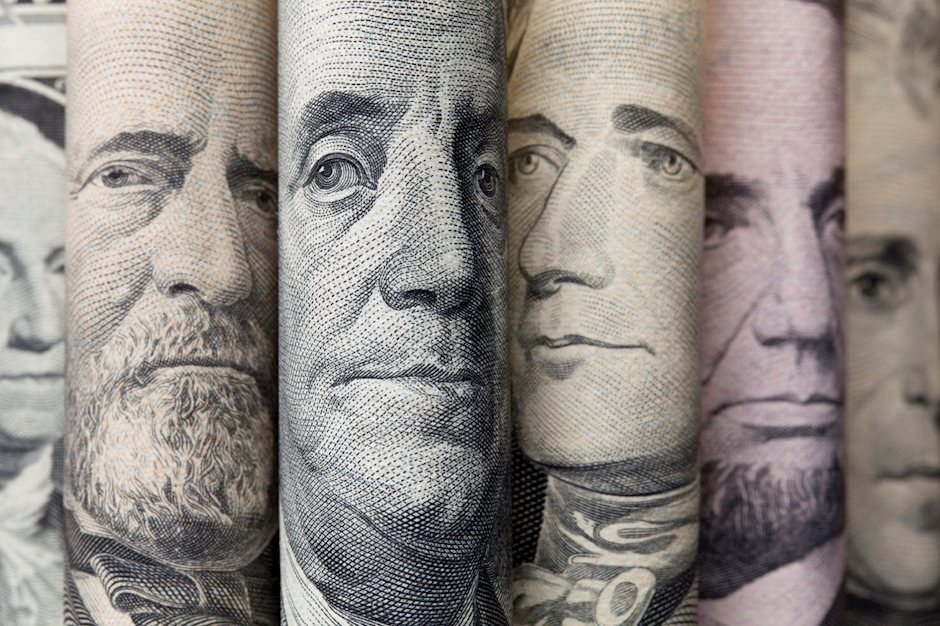US Dollar sees mild gains ahead of CPI data
- Investors await US inflation data to shape their expectation of easing cycle pace.
- The consensus sees the easing cycle initiation from June after mixed NFP data on Friday.
- The US won’t release any relevant reports in Monday's session.

The US Dollar Index (DXY) is trading at 102.80 with mild gains in Monday’s session. Despite Powell's dovish tone and mixed employment figures, the Federal Reserve's (Fed) future stance on easing interest rates is expected to be influenced largely by US inflation data scheduled for release on Tuesday.
The US labor market saw a mixed performance in February. Despite the Unemployment Rate increasing, earnings figures mildly eased, while the job creation pace accelerated. Easing expectations didn’t see major changes, and the consensus still expects the first cut from the Fed in June.
Daily digest market movers: DXY sees some upside as markets brace for CPI
- The dual effect of Powell's speech coupled with mixed employment data seems to cap any upward movement of the USD.
- Investors keep their expectations steady for a June interest rate cut by the Fed, predicting a total easing of 100 basis points for this year.
- This week's data poses a lopsided risk for the Greenback as weakened inflation or Retail Sales data from February will further support the argument for a June rate cut.
- US Treasury bond yields are on the rise, trading at 4.51%, 4.07%, and 4.09% for the 2-year, 5-year and 10-year bonds, respectively.
DXY technical analysis: DXY displays a hint of bullish resurgence, bears still in charge
The indicators on the daily chart reflect a mixed sentiment in the market. The Relative Strength Index (RSI) remains in negative territory, but the positive slope posits a hint of bullish resurgence, indicating that the selling momentum could be weakening.
While the Moving Average Convergence Divergence (MACD) is in an area of flat red bars, this too implies that bears are losing their selling edge, possibly paving the way for a minor bullish correction.
The Simple Moving Averages (SMAs) scenario further emphasizes the bearish trend, with DXY charting beneath the 20, 100 and 200-day Simple Moving Averages. This underpins the dominant bearish market structure, but simultaneous signs of a bullish reversal cannot be utterly discounted.
Still, after losing 1% last week, the short-term outlook for the DXY remains more inclined to the bearish side. However, bears seem to be taking a breather, and if the bullish indications strengthen, buyers might attempt to seize control in the near future.
Central banks FAQs
What does a central bank do?
Central Banks have a key mandate which is making sure that there is price stability in a country or region. Economies are constantly facing inflation or deflation when prices for certain goods and services are fluctuating. Constant rising prices for the same goods means inflation, constant lowered prices for the same goods means deflation. It is the task of the central bank to keep the demand in line by tweaking its policy rate. For the biggest central banks like the US Federal Reserve (Fed), the European Central Bank (ECB) or the Bank of England (BoE), the mandate is to keep inflation close to 2%.
What does a central bank do when inflation undershoots or overshoots its projected target?
A central bank has one important tool at its disposal to get inflation higher or lower, and that is by tweaking its benchmark policy rate, commonly known as interest rate. On pre-communicated moments, the central bank will issue a statement with its policy rate and provide additional reasoning on why it is either remaining or changing (cutting or hiking) it. Local banks will adjust their savings and lending rates accordingly, which in turn will make it either harder or easier for people to earn on their savings or for companies to take out loans and make investments in their businesses. When the central bank hikes interest rates substantially, this is called monetary tightening. When it is cutting its benchmark rate, it is called monetary easing.
Who decides on monetary policy and interest rates?
A central bank is often politically independent. Members of the central bank policy board are passing through a series of panels and hearings before being appointed to a policy board seat. Each member in that board often has a certain conviction on how the central bank should control inflation and the subsequent monetary policy. Members that want a very loose monetary policy, with low rates and cheap lending, to boost the economy substantially while being content to see inflation slightly above 2%, are called ‘doves’. Members that rather want to see higher rates to reward savings and want to keep a lit on inflation at all time are called ‘hawks’ and will not rest until inflation is at or just below 2%.
Is there a president or head of a central bank?
Normally, there is a chairman or president who leads each meeting, needs to create a consensus between the hawks or doves and has his or her final say when it would come down to a vote split to avoid a 50-50 tie on whether the current policy should be adjusted. The chairman will deliver speeches which often can be followed live, where the current monetary stance and outlook is being communicated. A central bank will try to push forward its monetary policy without triggering violent swings in rates, equities, or its currency. All members of the central bank will channel their stance toward the markets in advance of a policy meeting event. A few days before a policy meeting takes place until the new policy has been communicated, members are forbidden to talk publicly. This is called the blackout period.
Author

Patricio Martín
FXStreet
Patricio is an economist from Argentina passionate about global finance and understanding the daily movements of the markets.

















